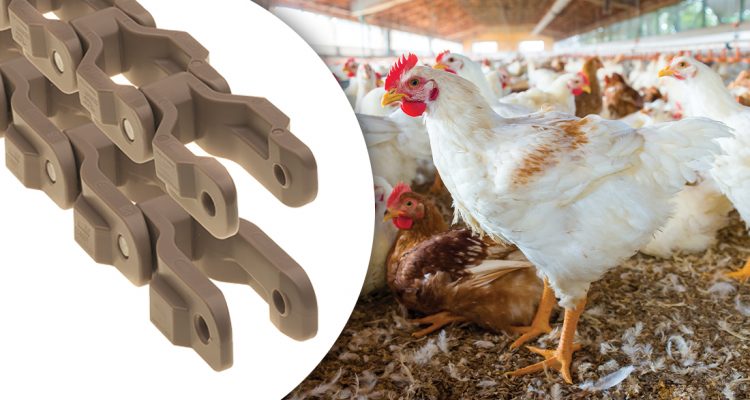The poultry processing industry in Australia is heavily regulated with a closed group of six Australian companies primarily responsible for the production of approximately 90% of the chicken meat products.
Unlike the more complex supply chain structures of other agricultural segments, the poultry industry is typically vertically integrated– meaning that each individual company will commonly oversee every aspect of the chicken production, from the breeding farms and hatcheries to the feed mills and processing plants, according to Leon Stefanec, National Business Development Manager for Food & Beverage at Motion Australia.
“Poultry producers take much care to examine all of their production operations to identify potential hazards and implement control measures in accordance with food safety standards and requirements of their state and territory,” says Leon.
“Poultry processing operations need to adhere to the food safety requirements for production and processing of poultry meat that will be sold in grocery stores and fit for human consumption,” he explains. “Additionally, their equipment must be kept up to date to avoid any unnecessary downtime that could increase the risk of contamination and pathogens like salmonella.”
As a result, poultry processing facilities are generally located within 200km of where the chickens are reared and based out of some of the more lush and temperate farming areas in South Queensland, New South Wales, Victoria, and South Australia where the climate conditions are ideal, and water and power supplies are ample.
“In large scale poultry processing plants, there is a great degree of automation in place which includes conveyor systems for transporting the chicken from transport docks to different areas in the processing plant,” explains Leon.
“The birds arrive in small plastic cages that are contained within larger fixed steel framed housing, they are transferred from the truck to an infeed conveyor where they are carried to their next destination for unloading.”
The industry standard for this conveyor chain has traditionally been a white acetal case carrying chain known as CC600 chain, according to Leon.
“Case conveyor chains have long been a reliable and robust method of transporting heavy crates anywhere where simple cases and crates need to be transported effectively with minimal down time and maintenance,” he says.
“However, the steel framed housings can cause the conveyor chain to wear as it experiences friction during the transfer and many poultry producers were finding that they needed to replace the CC600 chain every three months,” highlights Leon.
“When you consider that every plant needed to replace between 500 to 1000 feet of conveyor chain each time, the costs were becoming significant for producers.”
As this continued to be an ongoing problem for plant operators within the poultry processing industry, customers began reaching out to Motion Australia for chain solutions that could last longer and had greater wear resistance.
At this stage, Motion Australia’s Strategic Supply Partner (SSP), Regal Rexnord introduced their Low-Friction 600 and 600TAB range as an alternative to the traditional CC600 cased chain. Manufactured in the Netherlands, the products gained popularity overseas before being made available in Australia at Motion Australia’s network of branch locations.
Matt Crehan, National Product Manager for Regal Rexnord explains how the LF600 and LF600TAB chains are constructed from the patented Rexnord LF Low Friction acetal which equates to reduced wear between the chain and wear strips and longer chain life– ensuring low friction conveying.
“The Rexnord LF600 and LF600TAB series are made from Polyacetal with an inherent strength that easily surpasses other chain materials such as polypropylene (PP) or polyester (PBT),” he says.
“The LF600 chain also has a very tight radius due to the unique pin design which allows it to travel around bends without difficulty with a positive hold down force in each radius that prevents the chain from lifting. This makes the LF600 and LF600TAB superior in terms of strength carrying higher loads on higher speed applications.”
“The improved pin fastening system makes handling heavy loads over a small footprint easily achievable, while at the same time it makes replacing sections of the chain and dismantling it for washdowns incredibly simple for maintenance workers,” he furthers.
The result on poultry processing conveyors is lower resistance between the chain and the products and less tension at the head shaft for easier chain pull due to a tighter radial clearance.
“The reduced friction between the chain and the wear strip also assists with chain pull so the tension at the headshaft is alleviated,” explains Matt. “The lower coefficient of friction in a conveyor run also means there is less chance of chain jam ups or issues with obstructions.”
Motion Australia maintains high levels of stock of the Regal Rexnord LF600 and LF600TAB chains around the country to accommodate plant operations with the poultry processing segment– as well as dairy, beverage, and other food processing facilities.
For more information on the Regal Rexnord LF600 and LF600TAB conveyor chain, visit your local Motion Australia branch and speak to a technical representative today.




